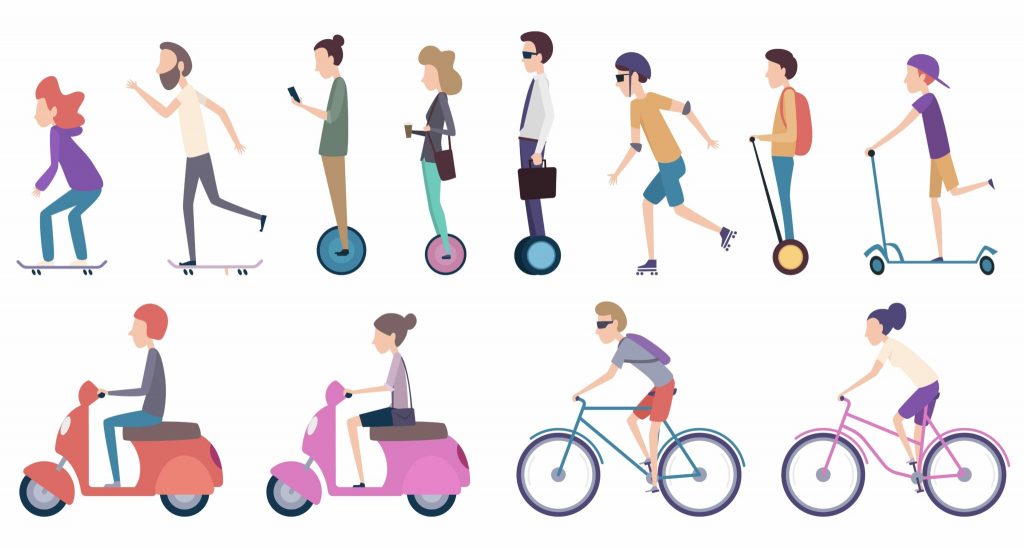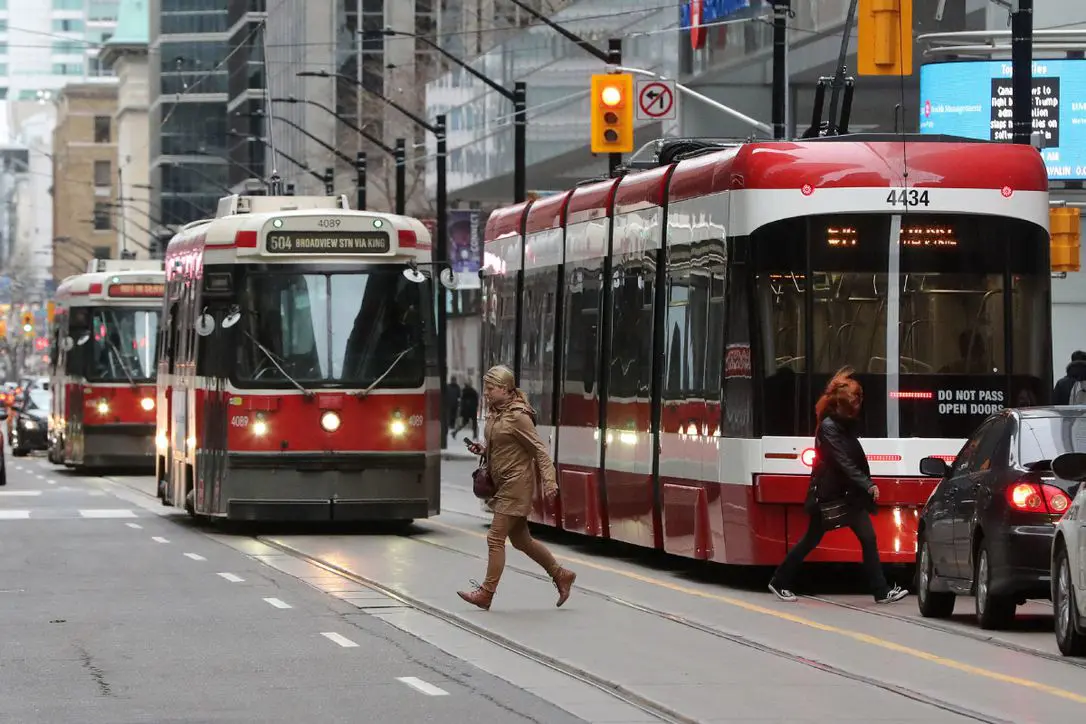Canadian community initiatives working towards transportation equity
Transport poverty occurs when inequitable transportation infrastructure and systems impede access to employment, services, educational opportunities, food, open space and leisure, and other destinations. People all across Canada are experiencing this – some estimates suggest up to 1.3 million Canadians live in transport poverty. In good news, there are community initiatives all across Canada working to support people experiencing transport poverty, many of which are grassroots initiatives working with specific groups in specific communities. We wanted to bring this work into the spotlight.
The Canadian Community Initiatives Addressing Transport Poverty Catalogue is a project in partnership between the Mobilizing Justice Theme 2 Transportation Modes team and The Centre for Active Transportation (TCAT). The catalogue collates community initiatives across Canada that support transport equity by increasing access to transportation options, especially for people who may be experiencing transport poverty. The catalogue provides a snapshot of existing community initiatives in response to transportation infrastructure deficits and policy and service gaps. We envision that the catalogue will be useful for advocates and practitioners to better understand the transportation barriers and adaptive practices being undertaken across Canada and to ultimately inform the development of evidence-based policy recommendations to advance transport equity.
The catalogue documents 266 community-led transport equity initiatives, and descriptions of various characteristics of the initiatives (e.g. location, host organization, mode of transportation). A first version of the catalogue and accompanying report was created in Summer 2021 by Sabat Ismail. In Summer 2022, we updated the catalogue with expanded entries in regions that were previously underrepresented and completed descriptions of all the initiatives. (While every effort was made to capture as many initiatives as possible, some were likely missed.) The latest version also directs more attention to specific equity-deserving groups and how their needs are, or are not, being met.
After completing the catalogue, we analyzed patterns and trends. Here we highlight three key takeaways, and provide more detailed analysis below.
Key Takeaways
Focus on Cycling Initiatives: Over half (56%) of the initiatives focus on cycling. Some examples include initiatives that are providing people with access to low-cost bicycles or advocating for safe cycling facilities. At first glance, it may seem like cycling is overrepresented, but these efforts are greatly needed and often in greater demand than what is available. With the federal announcement of Canada’s National Active Transportation Strategy and Fund in 2021, hopefully these kinds of projects will continue to increase and meet demand. More importantly, the growing demand for cycling demonstrates the urgent need for more transportation options to alleviate transport poverty. This need is especially true for anyone who may have mobility limitations or lives in an area without access to safe cycling infrastructure.
Focus on Urban Environments: Half of the initiatives are found in urban environments, and 34% are dedicated to those traveling between different built environment types (i.e. from urban to rural places). The representation of urban environments is important because, in 2021, 74% of Canada’s population lived in one of the 41 large urban centres (cities with more than 100,000 inhabitants). From 2016 to 2021, populations in downtown centres grew the most rapidly at an average of 11%. However, urban sprawl is also continuing to increase, especially in the furthest suburbs (exurbs), communities that are at least a 30-minute drive from downtown in non-rush hour traffic. These exurbs grew by 9%, on average, and faster than closer suburban communities (StatCan, 2022). This growth of distant urban sprawl highlights the need for initiatives that not only address transport poverty in urban cores, but also in the surrounding communities. According to Statistics Canada, this rapid urbanization emphasizes the “need for infrastructure, transportation and services of all kinds” (StatCan, 2022).
Focus on the General Population: While many Canadian community initiatives in the catalogue have a focus on equity-deserving groups, the majority (58%, 155 initiatives) are open to the general public. An example of this would be a community bicycle collective which welcomes anyone needing to work on their bicycle. Having initiatives open to the general public makes them accessible to a wider audience, but it may not focus or specialize efforts to serve those who are most in need. To fundamentally address transport poverty, transportation systems must move towards a model of mobility justice. There is an imperative to identify challenges for communities experiencing transport poverty and create tailored solutions that work for them.
Detailed Findings
Here we highlight seven summary findings, looking at the distribution of the initiatives by: 1. region, 2. transportation mode, 3. built environment, 4. combined transportation mode & region, 5. equity-deserving group focus, and 6. combined transportation mode & equity-deserving group focus.
- By Region: Of the 266 initiatives (see Figure 1), the greatest percentage are in Ontario (36%, 97), followed by Québec (18%, 47), the Prairies (17%, 45), British Columbia (14%, 38), the Atlantic region (11%, 28), national initiatives (4%, 10), and finally <1% (only 1) in the Northern region. To some degree, these percentages reflect the proportion of the Canadian population living in each region, with the exception of the Atlantic region that has more community initiatives working to address transportation poverty. To note, the relative population may not be representative of the proportion of equity-deserving individuals in a region; some regions may experience more transportation poverty than others, and may have more need for initiatives supporting these groups. There were also initiatives that aimed to support people across the nation, for example Canada Walks (a national project of Green Communities Canada that promotes the value of walking and walkability) or Vélo Canada Bikes (a national cycling advocacy organization).
- By Mode of Transportation: A look at the catalogue shows that many initiatives are tackling transportation challenges by increasing access to transport options beyond the private automobile. As seen in Figure 2, the primary focus is on improving travel options, especially for active transportation: 42% (113) of the community initiatives are focused on access to cycling, followed by public transportation (22%, 59), active transportation (both walking and cycling) (14%, 37), sustainable transportation (both active and public transportation) (11%, 29), car/rideshare (7%, 18), and walking (4%, 10).
- By Built Environment: Community initiatives are located in a variety of built environments. As seen in Figure 3, 50% (134) of the initiatives are found in urban environments. Only 8% (21) are in suburban areas and 8% (21) are in rural places (overall 16% are situated in non-urban environments). A third of the interventions (34%, 90) cross-cut built environment contexts (i.e. Urban/Rural, Urban/Suburban, Urban/Suburban/Exurban, and All). These initiatives often assist people traveling between different types of communities, for example, someone moving from an exurban environment to an urban environment. As Canadian suburban and exurban communities continue to grow rapidly (StatCan, 2022), more efforts are needed to assist movement between different types of built environment, especially for those living in transport poverty.
- By Region & Mode of Transportation: We also looked at how the mode of transportation options differed by region. As displayed in Figure 4, cycling is the common focus across all regions, with the exception of national projects and the Northern region. There was also a relatively large representation of projects that focused on public transit in the Atlantic provinces, British Columbia, Ontario, the Prairies, and Québec, despite differing population sizes and urbanization rates. Another interesting note is that the highest rate of car/rideshare initiatives are in the Prairies, significantly higher than any other region in the country, and suggests differing transportation conditions than other Canadian regions.
- Equity-Deserving Group Focus: Of the 266 initiatives, 42% (111) explicitly state that they provide services to one or more equity-deserving groups, for a total of 155 different equity-deserving groups being served. Close to half (46%, 72) of these are geared toward people with low-income, possibly due to the intersectional nature of poverty. The rest of the community initiatives that provide services to equity-seeking groups focus on people with disabilities (13%, 20), racialized and indigenous people (12%, 18), children and youth (8%, 13), seniors (8%, 12), and newcomers (6%, 10) (see Figure 5).
- By Equity-Deserving Group Focus & Mode of Transportation: We also examined which transport modes are being offered as a solution to transportation poverty for different equity-seeking groups. For this analysis we merged the mode of transportation into three groups: 1) active transportation (including walking, cycling, and initiatives focused on both), 2) public transit, and 3) other (sustainable transportation and ride/carshare). As seen below in Figure 6, many initiatives focused on active transportation target people with low-income, children and youth, housing insecure people, newcomers, and racialized people. Public transportation is the most abundant transportation option provided for people with disabilities, and a close second option for 2SLGBTQ+, seniors, and low–income individuals. ‘Other’ transportation options, like car/rideshare, are the most common mode for people with incarcerated loved ones, women and girls, Indigenous people, and senior focused initiatives.
Diversifying the transportation modes and built environments being served, while also targeting equity-deserving groups, will help Canada to achieve transport equity. This catalogue provides a foundation of understanding on Canadian grassroots initiatives working to address transport poverty. Recording and analyzing the initiatives outlines the current work being done and the remaining gaps in access to transportation options. Through this work and continued research, we can begin to formulate targeted solutions and evidence-based policies that will move Canada towards greater mobility justice.
Click to access the report and database.
You may also like
 Documenting Canada’s Community Response to Transport Poverty: A 5-Year Review
Documenting Canada’s Community Response to Transport Poverty: A 5-Year Review
With the recent release of the Canadian Community Initiatives Addressing Transport Poverty Catalogue, accompanying report, and interactive web map, a multi-year effort… Read More
 Findings from the City of Grand Rapids’ Shared Micromobility Free Fare Pilot Program
Findings from the City of Grand Rapids’ Shared Micromobility Free Fare Pilot Program
The Free Fare Pilot Shared micromobility systems, such as bikeshare and scootershare, are increasingly important to cities’ transportation strategies, as they seek to move… Read More
 The Different Price Tags of Access: Transit, Housing Affordability and Demographics
The Different Price Tags of Access: Transit, Housing Affordability and Demographics
Introduction Building a new transit system? Great for commuters. Even better for housing prices. When cities build transit, nearby land and housing prices often shoot… Read More
